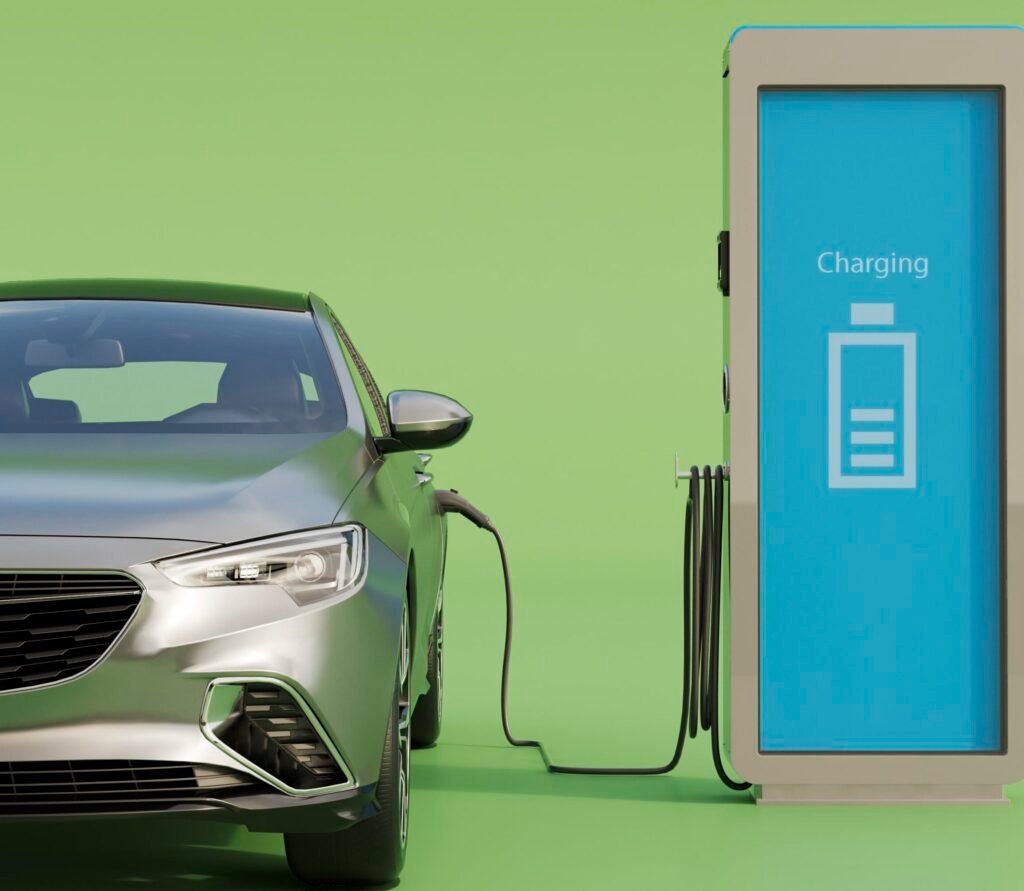Table of Contents
TogglePower quality issues of Rooftop Solar PV
Reason | |
Voltage Flicker | Variations of the solar PV generation |
Over Voltage | Solar generation (or any DG) increases voltage at terminals of the generator |
Fast voltage variations | 1.High capacity solar PV 2.Tracking systems 3.Intermittency of the power generation due to change in cloud cover, climatic conditions 4.Variations in the reactive power |
Slow voltage variations | 1.Power flow variations |
Voltage Unbalance | Uneven interconnection of single phase inverters |
Supra Harmonics | 1.Residues from the switching in inverters |
Lower Order Harmonics | 1.Harmonic network impedance affected by solar PV inverters |
DC Offset | Inverters are sources of DC injection |
Voltage flicker
Variation of input voltage sufficient in duration to allow visual observation of a change in electric light source intensity Quantitatively, flicker may be expressed as the change in voltage over nominal expressed as a percent For example, if the voltage at a 120 V circuit increases to 125 V and then drops to 117 V, the flicker, f, is calculated as f 100 × (125-117)/120=6.66%.
Short term flicker(Pst): The flicker severity evaluated over a short period to time 10 minutes) .
Long term flicker (Plt): The flicker severity evaluated over a long period of time(typically 2 hours).
Active power flow
During the solar period, Rooftop solar PVs are contributing towards reducing the active power, whereas reactive power remains fairly constant as mostly solar Inverters set for unity power factor which means that PV generators aren’t contributing towards reactive power and all required reactive power are supplied through the grid.
A reverse power flow of around 80 kW which is almost equal to day time average demand load can be seen at 75% of the solar PV penetration level.
In the present network, the transformer loading level has only been reduced to 22%(54 kVA) as shown as the total reactive power is still supplied by the grid.
Increasing levels of PV penetration from the present network causes higher reverse power to flow towards the transformer thus affecting the 11 kV network.
Already reported reverse power flow in the present network 40 of solar penetration)when the solar power generation is maximum during 11 00 AM to 1 00 PM can also be seen verified by the simulation outcomes.
Changes in solar generation can influence grid frequency, especially in LV distribution networks with high penetration of rooftop PV systems. Frequency deviations outside acceptable limits can impact the operation of equipment and affect grid stability.

Network losses with solar penetration
Line losses are proportional to the square of current magnitude flowing through the line.
Therefore,losses can reach a minimum value when the power injected by PVs equals the power absorbed by loads.
Any increase in PV penetration beyond that level could result in reverse power flow and gradual increase of losses.
In fact, there is a rule of thumb that line losses plotted against penetration level would resemble a U shaped curve.
Network power loss is seen to reduce with the integration of solar PV upto 40% penetration level.
However,further increase in solar PV to 75% has resulted in a higher power loss .
Thus,40% solar PV penetration level can be considered as an optimum level in terms of lower loss.
Voltage unbalance
Solar PV systems can cause voltage fluctuations due to their intermittent nature. Sudden changes in solar irradiance can lead to rapid voltage variations, impacting sensitive equipment and causing flicker.
During the night peak, the same system is reported to have more than 1% voltage unbalance based on available field measurements.
Majority of Solar rooftop installations are single phase type. The phase wise uneven distribution of PV rooftop in LT Distribution network is a major reason which causes unbalance loading of Transformer.This ultimately results in to the excessive neutral current.
Solar PV systems may unevenly distribute power among different phases of the LV distribution network, leading to voltage unbalance. This can affect the performance of connected loads and increase stress on transformers and other equipment.
Method for controlling Over voltage tripping
Changing Inverter settings to lower voltage.
Distance from switchboards, thin existing wires from inverter or switchboard or wire which are going to grid connection.
Changing usage pattern, consume maximum during noon, don’t send back to the grid.
Existing power lines with thicker cables in street power lines to switchboard to home.
Put Voltage Stabiliser before mainline.
Harmonics
Inverters used in solar PV systems can introduce harmonic distortion into the grid. Harmonics are non-standard frequencies that can degrade power quality, leading to equipment malfunction and increased losses in distribution systems.
The DC component of a waveform has undesirable effects, particularly on transformers, due to the phenomenon of core saturation.
Saturation of the core is caused by operating the core at magnetic field levels above the knee of the magnetization curve. Transformers are designed to operate below the knee portion of the curve.
When DC voltages or currents are applied to the transformer winding, large DC magnetic fields are set up in the transformer core.
The sum of the AC and the DC magnetic fields can shift the transformer operation into regions past the knee of the saturation curve.
Operation in the saturation region places large excitation power requirements on the power system.
The transformer losses are substantially increased, causing excessive temperature rise. Core vibration becomes more pronounced as a result of operation in the saturation region.
DC Injection
Grid-connected inverters without isolation transformer usually have certain amount of DC component injected to the AC grid due to current sensor error, tolerance of power switching device, asymmetry of PWM gating driving pulses etc.
Magnetic saturation of a transformer core may be caused by excessive primary voltage, operation at too low of a frequency, and/or by the presence of a DC current in any of the windings.
If the core flux may reach saturation levels during peak moments of the AC sinewave cycle, then the voltage induced in the secondary winding will no longer match the wave-shape as the voltage powering the primary coil.
The presence of harmonics causes overheating, power loss, reduced efficiency and shortened lifespan of the devices.
Generation side Harmonics
Harmonic currents (THD) from consumer loads are observed much higher than generation side THD.
Main accountable reason behind these harmonics is consumer behaviour and increasing numbers of connected electronic loads.
It is very difficult to control load side harmonics in existing highly electronic scenario, where most of the loads are electronic and generated a lot of harmonics in the system.
Solutions (such as L-C Harmonic filters) at connected loads might be costly to consumers and solutions at DT might be costly to local Distribution companies.
Effect of Harmonics on Power factor
True Power Factor = Displacement PF × Distortion PF=Total Active Power (including harmonics)/Total Apparent Power (including harmonics).
Due to the high content of harmonics, the distortion power factor tends to raise which was otherwise fairly following the true power factor.
Frequently Asked Question (FAQ)
What is power quality, and why is it crucial for rooftop solar PV systems?
Power quality refers to the stability and reliability of electrical power in terms of voltage, frequency, and waveform. It’s vital for rooftop solar PV systems because any deviation from standard parameters can affect their performance and the overall grid stability.
What are common power quality issues associated with rooftop solar PV systems on LV distribution networks?
Common issues include voltage fluctuations, harmonic distortion, voltage unbalance, and reactive power imbalance. These can arise due to the intermittent nature of solar power generation and the varying load characteristics of LV distribution networks.
How do voltage fluctuations impact rooftop solar PV systems and the grid?
Voltage fluctuations can lead to underperformance or damage to solar PV systems. They may also cause voltage flicker, affecting sensitive equipment connected to the grid and disrupting normal operations in nearby facilities.
What is harmonic distortion, and how does it affect rooftop solar PV systems?
Harmonic distortion refers to the presence of non-standard frequencies in the power system waveform. It can cause overheating in solar inverters and other equipment, reducing their lifespan and efficiency.
How does voltage unbalance impact rooftop solar PV systems and LV distribution networks?
Voltage unbalance can lead to unequal distribution of power among the phases, affecting the performance of solar inverters and causing additional stress on distribution transformers and other grid components.
What measures can be taken to mitigate power quality issues in rooftop solar PV systems?
Measures include installing voltage regulation devices, harmonic filters, and reactive power compensation systems. Additionally, proper system design, regular maintenance, and compliance with grid codes can help ensure optimal performance and grid stability.
How can stakeholders ensure compliance with relevant standards and regulations for rooftop solar PV installations?
Stakeholders should stay updated with local regulations and standards governing solar PV installations, including grid interconnection requirements and power quality specifications. Working closely with utility providers and certified solar installers can help ensure compliance.
What role do monitoring and control systems play in managing power quality issues in rooftop solar PV plants?
Monitoring and control systems provide real-time data on solar PV system performance, allowing operators to identify and address power quality issues promptly. They can also enable remote adjustments to optimize system operation and grid integration.
Are there any financial incentives or programs available to support the implementation of power quality solutions for rooftop solar PV systems?
Some regions offer incentives or funding programs to encourage the adoption of power quality solutions for renewable energy installations. These may include grants, rebates, or preferential feed-in tariffs for solar PV systems that meet specific performance and grid compatibility criteria.
Where can I find additional resources or support for addressing power quality issues in rooftop solar PV installations?
Local utility providers, renewable energy associations, and government agencies often offer guidance, technical assistance, and training programs for solar PV system owners and operators. Online forums, industry publications, and professional networks can also be valuable sources of information and support.


